Soviet self-propelled guns against German tanks in the initial period of the war
In the 1930s, attempts were made in the Soviet Union to create self-propelled artillery mounts for various purposes, a number of samples were put into service and produced in a small series.
SU-12 self-propelled artillery mount
The first Soviet serial self-propelled gun was the SU-12, first demonstrated at a military parade in 1934. The machine was armed with a modified 76,2 mm regimental cannon arr. 1927, mounted on a pedestal. The chassis was originally used by the three-axle American truck Moreland TX6 with two drive axles, and since 1935, the domestic GAZ-AAA.
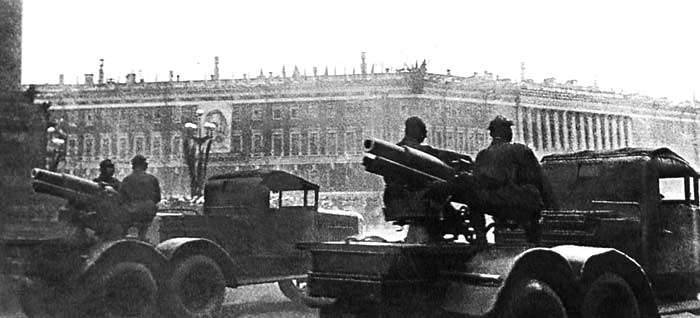
The installation of guns on the truck platform made it possible to quickly and inexpensively create an impromptu self-propelled guns. The first SU-12s did not have any armor protection at all, however, shortly after the start of mass production, a 4 mm steel shield was installed to protect the crew from bullets and light fragments. The ammunition of the gun was 36 shrapnel and fragmentation grenades, armor-piercing shells were not originally provided. Rate of Fire: 10-12 rds / min.
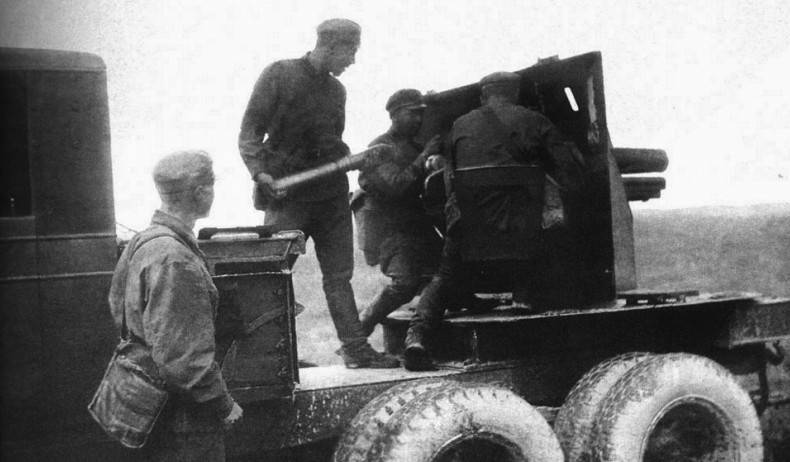
The shelling sector was 270 °, fire from the guns could be fired both backward and on board. Theoretically, it was possible to fire on the go, but the accuracy of the shooting fell sharply, and the calculation of the "self-propelled cargo" was very difficult to load and direct the gun in motion. The mobility of the SU-12 when driving on the highway was significantly higher than that of the 76,2-mm regimental mounted horse-drawn guns, but the artillery installation on the cargo chassis was not the best solution. The three-axle truck could confidently move only on good roads and, in terms of cross-country ability on soft soils, was seriously inferior to horse carts. Given the high silhouette of the SU-12, the vulnerability of artillery calculation, partially covered by an armor shield, was very high when firing direct fire. In this regard, it was decided to build self-propelled guns on tracked chassis. The last cars were delivered to the customer in 1936, in total 99 self-propelled guns SU-12 were produced.
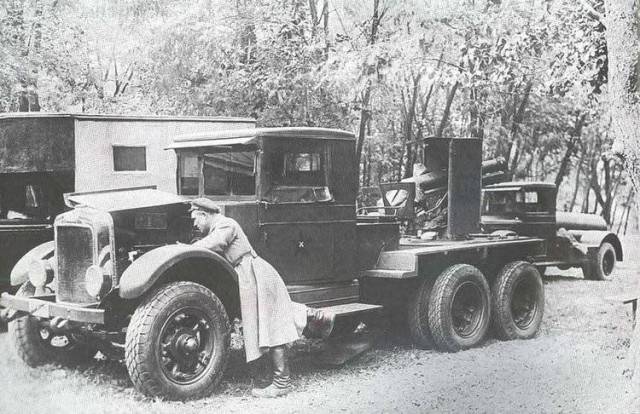
In the 1920s and 1930s, the creation of self-propelled guns based on trucks was a worldwide trend, and this experience in the USSR proved to be useful. Operation of self-propelled artillery installations SU-12 has demonstrated that placing a gun designed for direct fire on a truck chassis is a dead end solution.
Self-propelled artillery installation SU-5-2
In the period from 1935 to 1936, the Leningrad Experimental Engineering Plant No. 185 built 31 self-propelled artillery mount SU-5-2 on a light chassis tank T-26. SPG SU-5-2 was armed with a 122-mm howitzer mod. 1910/1930 The horizontal pointing angles are 30 °, and the vertical angles are from 0 to + 60 °. The maximum initial velocity of the fragmentation shell is 335 m / s, the maximum firing range is 7680 m, and the rate of fire is up to 5 rds / min. Carried ammunition: 4 shells and 6 charges.
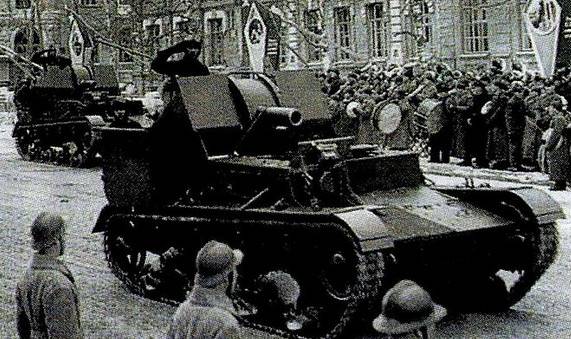
The calculation of the gun was covered with armor in front and partially on the sides. The thickness of the frontal armor was 15 mm, sides and stern - 10 mm. Curb weight and mobility of the SU-5-2 were at the level of late modifications of the T-26.
It should be understood that the self-propelled guns SU-12 and SU-5-2 were intended to provide direct fire support to the infantry, and their anti-tank capabilities were very modest. The dull-headed 76-mm armor-piercing projectile BR-350A had an initial speed of 370 m / s and at a range of 500 meters normal it could penetrate 30 mm armor, which allowed it to fight only with light tanks and armored vehicles. In the ammunition of the 122-mm howitzer there were no armor-piercing shells, but in 1941 the 53-OF-462 high-explosive fragmentation shell weighing 21,76 kg, containing 3,67 kg of TNT, was guaranteed to destroy or permanently disable any German tank in the event of a direct hit . When the shell bursts, heavy fragments were formed that could penetrate armor up to 20 mm thick at a distance of 2-3 meters. However, due to the short range of the direct shot, the relatively low rate of fire and modest ammunition, the calculation of the self-propelled guns SU-5-2 could hope for success in a direct collision with enemy tanks only if it was ambushed from a distance of up to 300 m. All self-propelled artillery installations SU-12 and SU-5-2 were lost in the initial period of the war and, due to their small numbers and low combat characteristics, did not affect the course of hostilities.
KV-2 heavy assault tank
Based on the experience of using tanks on the Karelian Isthmus, in February 1940 the KV-2 heavy assault tank was adopted by the Red Army. Formally, this machine, due to the presence of a rotating tower, belonged to tanks, but according to many signs it is actually self-propelled guns.
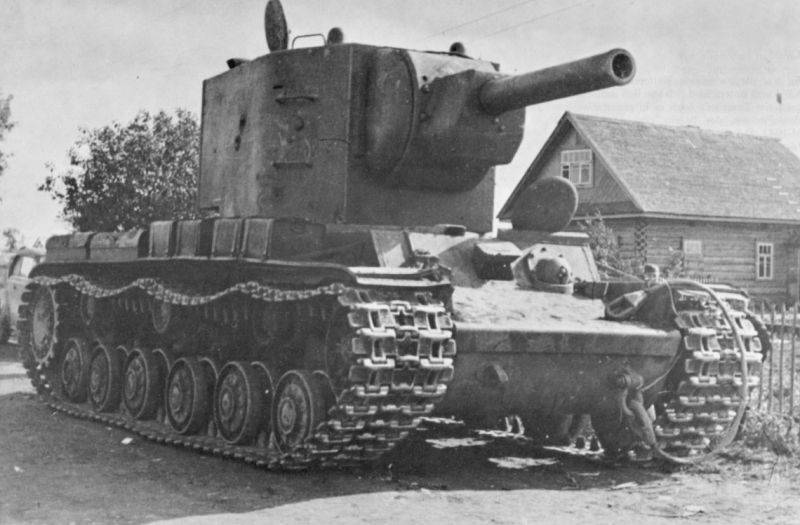
The thickness of the front and side armor of the KV-2 was 75 mm, and the thickness of the gun’s armor mask was 110 mm. This made him less vulnerable to 37-50 mm anti-tank guns. However, high security was often depreciated by low technical reliability and poor off-road patency. With a diesel engine power of V-2K 500 hp The 52-ton car during the tests on the highway was able to accelerate to 34 km / h. On the march, the speed of movement along a good road did not exceed 20 km / h. On rough terrain, the tank moved at a pedestrian speed of 5-7 km / h. The KV-2's penetration through soft soils was not very good, and it was not easy to get a tank stuck in the mud, so it was necessary to carefully select the route. Also, not every bridge was able to withstand the KV-2.
KV-2 was armed with a 152-mm tank howitzer mod. 1938/40 (M-10T). The gun had angles of vertical guidance: from −3 to + 18 °. When the tower was stationary, the howitzer could be induced in a small sector of horizontal aiming, which was typical for self-propelled guns. Ammunition was 36 rounds of separate shell loading. Practical rate of fire with the refinement of aiming - 1-1,5 rds / min.
As of June 22, 1941, the KV-2 ammunition contained only HE-530 high-explosive fragmentation grenades weighing 40 kg, containing about 6 kg of TNT. During the fighting, due to the impossibility of manning with standard ammunition for firing, all shells of the towed M-10 howitzer were used. They used concrete-piercing shells, cast-iron fragmentation howitzer grenades, incendiary shells and even shrapnel shells that were put on strike. A direct hit of a 152-mm projectile was guaranteed to destroy or disable any German tank. The close explosions of powerful fragmentation and high-explosive fragmentation shells also posed a serious danger to armored vehicles.
Despite the high destructive power of the shells, in practice, the KV-2 did not prove to be an effective anti-tank self-propelled gun. The M-10T gun had a whole range of shortcomings that made its effectiveness on the battlefield devalued. If when shooting at enemy’s stationary firing points and fortifications, the low combat rate of fire was not decisive, but in order to deal with rapidly moving enemy tanks, a higher rate of fire was required.
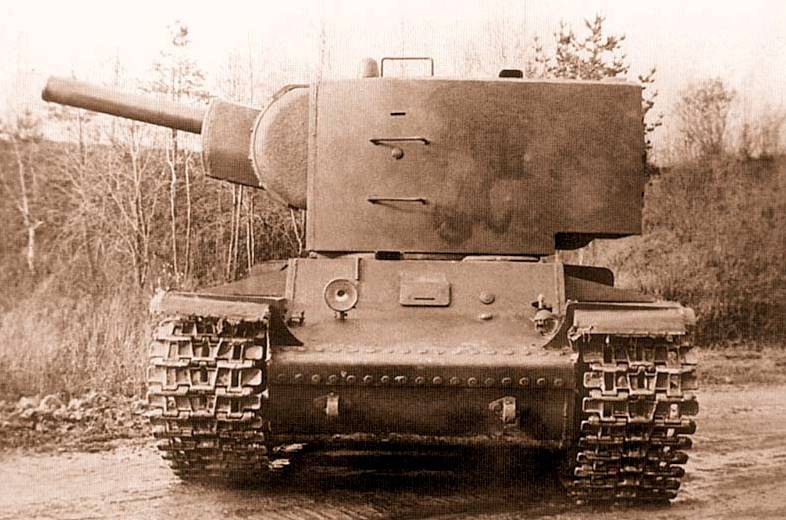
Due to the imbalance of the tower, the standard electric drive turned the tower in the horizontal plane very slowly. Even with a small angle of inclination of the tank, it was often impossible to turn the tower at all. Due to excessive recoil, it was possible to shoot a gun only when the tank was completely stopped. When firing on the go, there was a high probability of failure of the rotation mechanism of the tower and the motor-transmission group, and this despite the fact that full-charge shooting was categorically prohibited from the M-10T tank. Naturally, the inability to obtain the maximum initial speed reduced the range of a direct shot. Due to all this, the combat effectiveness of the machine, designed for offensive military operations and the destruction of enemy fortifications, was not high when firing direct fire from a distance of several hundred meters.
Apparently, the main part of the KV-2 was not lost due to enemy fire, but because of the lack of fuel, engine breakdowns, transmission and chassis. A lot of cars stuck in the mud were abandoned due to the fact that there were no tractors at hand that could tow them off-road. Shortly after the outbreak of war, the production of the KV-2 was curtailed. In total, from January 1940 to July 1941, 204 cars were built at the LKZ.
Improvised self-propelled guns on the chassis of the T-26 light tank
Thus, it can be stated that on June 22, 1941 in the Red Army, despite a fairly large fleet of armored vehicles, there were no specialized anti-tank self-propelled guns that could be very useful in the initial period of the war. A light tank destroyer could quickly be created on the chassis of light tanks T-26 early release. A significant number of such machines requiring repair were available in the troops in the prewar period. It seemed logical to alter anti-tank self-propelled guns of hopelessly outdated twin-turret tanks with pure machine gun weapons or with a 37 mm cannon in one of the towers. The self-propelled guns, created on the basis of the T-26, could be equipped with a 76,2 mm divisional or anti-aircraft gun, which would make such a self-propelled gun relevant until at least mid-1942. It is clear that the tank destroyer with bulletproof armor was not intended for a head-on collision with enemy tanks, but it could be quite effective in ambush operations. In any case, the 13-15 mm thick armor provided protection to the crew from bullets and fragments, and the self-propelled gun’s mobility was higher than that of the towed anti-tank and divisional guns of 45-76,2 mm caliber.
The relevance of the tank destroyer based on the T-26 is confirmed by the fact that in the summer and autumn of 1941, a number of light tanks that received damage to the turret or weapons were equipped with 45 mm anti-tank guns with armor shields in tank repair workshops. The improvised self-propelled guns did not exceed the T-26 tanks with a 45-mm gun in terms of firepower, they were inferior in crew protection. But the advantage of such vehicles was a much better view of the battlefield, and even in the conditions of catastrophic losses in the first months of the war, any combat-ready armored vehicles were worth its weight in gold. With proper tactics of use, such self-propelled guns in 1941 could quite successfully deal with enemy tanks.
In the period from August 1941 to February 1942 at the plant to them. Kirov in Leningrad using the chassis of damaged T-26 tanks, two series of self-propelled guns with a total number of 17 units were produced. Self-propelled guns equipped with a 76-mm regimental cannon arr. 1927. The gun had a circular shelling, the calculation in front was covered with armored shield. On the sides of the gun there were loopholes for two 7,62 mm machine guns DT-29.
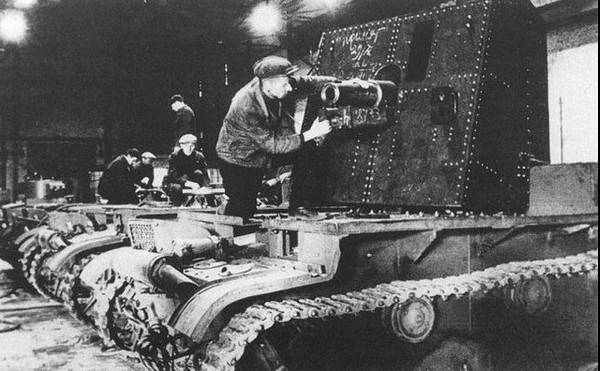
In the process of conversion, the turret box was cut. At the place of the fighting compartment, a box-shaped beam was installed, which served as a support for the platform with a curbstone of the rotating part of the 76-mm gun. Two hatches erupted in the platform flooring to access the shell cellar underneath. Cars released in 1942 also had armor protection on the sides.
In different sources, self-propelled guns were designated differently: T-26-SU, SU-26, but most often SU-76P. Due to the low ballistic characteristics of the regimental gun, the anti-tank potential of these self-propelled guns was very weak. They were mainly used for artillery support of tanks and infantry.
SU-76P, built in 1941, arrived in the 122nd, 123rd, 124th and 125th tank brigades, and production of 1942 - in the 220th tank brigade. Typically, four self-propelled guns were reduced to a self-propelled artillery battery. At least one SU-76P survived until the blockade broke.
Anti-tank self-propelled guns ZIS-30
The first anti-tank self-propelled artillery system, adopted by the Red Army, was the ZIS-30, armed with a 57-mm anti-tank gun mod. 1941 By the standards of 1941, this gun was very powerful, and in the initial period of the war at the actual shooting distances it pierced the frontal armor of any German tank. Very often, a 57 mm anti-tank gun mod. 1941 is called ZIS-2, but this is not entirely correct. From the PTO ZIS-2, the production of which began in 1943, the 57-mm gun mod. 1941 was distinguished by a number of details, although in general the design was the same.
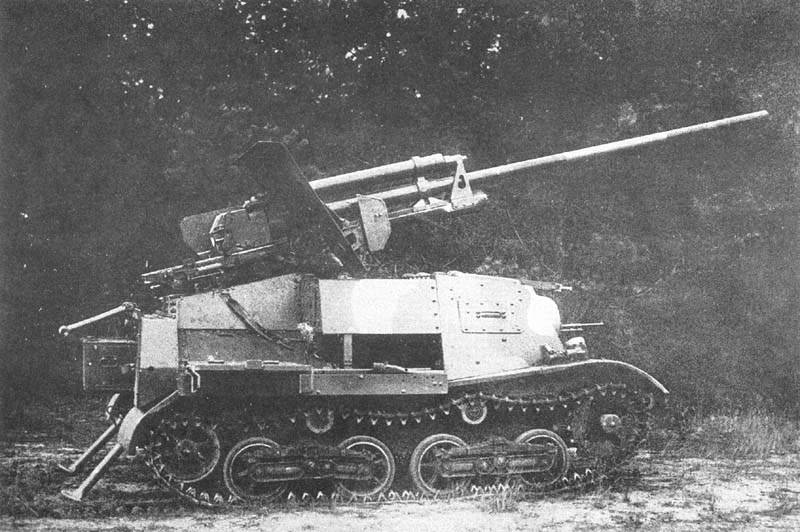
Self-propelled gun ZIS-30 was an ersatz wartime, created in a hurry, which affected the combat and operational performance. By means of minimal design changes, the swinging part of the 20-mm anti-tank gun was installed in the middle upper part of the body of the T-57 Komsomolets light tractor. The vertical pickup angles ranged from -5 to + 25 °, and horizontally in the 30 ° sector. Practical rate of fire reached 20 rds / min. For the convenience of the calculation, there were hinged panels that increased the area of the working platform. From bullets and fragments calculation of 5 people in battle was protected only by a gun shield. Fire from the gun could only be conducted from a place. Due to the high center of gravity and strong recoil, the coulters located in the rear of the machine had to be tilted to avoid tipping over. For self-defense in the frontal part of the hull there was a 7,62-mm machine gun DT-29, inherited from the Komsomolets tractor.
The thickness of the frontal armor of the body of the T-20 Komsomolets tractor was 10 mm, the sides and stern were 7 mm. The mass of the ZIS-30 in the combat position was a little more than 4 tons. The carbureted engine with a capacity of 50 hp could accelerate the car on the highway to 50 km / h. Speed on the march - no more than 30 km / h.
Serial production of the ZIS-30 began in September 1941 at the Gorky Artillery Plant No. 92. According to archival data, 101 tank destroyers with a 57-mm gun were built. These vehicles were equipped with anti-tank batteries in tank brigades of the Western and South-Western fronts (a total of 16 tank brigades). However, ZIS-30 were available in other parts. For example, in the fall of 1941, four self-propelled guns entered the 38th separate motorcycle regiment.
Production of the ZIS-30 did not last long and was completed in early October 1941. According to the official version, this was due to the lack of Komsomolets tractors, but even so, it was possible to put 57 mm guns that were very effective in anti-tank systems on the chassis of light tanks. The most likely reason for curtailing the construction of the 57-mm tank destroyer was most likely the difficulty with the production of gun barrels. The percentage of defects in the manufacture of trunks was excessively large, which was completely unacceptable in wartime. This, and not the “excess capacity” of the 57-mm anti-tank guns, explains their insignificant production volumes in 1941 and the subsequent rejection of serial construction. Plant staff No. 92 and V. G. Grabin himself, based on the design of a 57-mm gun mod. 1941, it turned out to be easier to establish the production of the divisional 76-mm gun, which became widely known as the ZIS-3. The 76 mm divisional cannon of the 1942 model (ZIS-3) at the time of creation had quite acceptable armor penetration, while possessing a much more powerful high-explosive fragmentation shell. This gun was widespread and was popular among the troops. ZIS-3 was in service not only in divisional artillery, specially modified guns entered the service of fighter-anti-tank units and were installed on self-propelled gun mounts. The production of the 57-mm anti-tank gun after making some design changes under the name ZIS-2 was resumed in 1943. This became possible after receiving the perfect machine park from the USA, which allowed us to solve the problem with the manufacture of trunks.
Despite the shortcomings, the ZIS-30 received a positive assessment in the troops. The main advantages of self-propelled guns were its excellent armor penetration and long-range direct shot. In late 1941 - early 1942, a 57-mm BR-271 projectile weighing 3,19 kg, leaving the barrel at an initial speed of 990 m / s, could penetrate the frontal armor of the German “triples” and “fours” at a distance of up to 2 km. With proper use of the 57-mm self-propelled guns, they proved to be quite good not only in defense, but also in the offensive, accompanying Soviet tanks. At the same time, their goal was not only enemy armored vehicles, but also firing points.
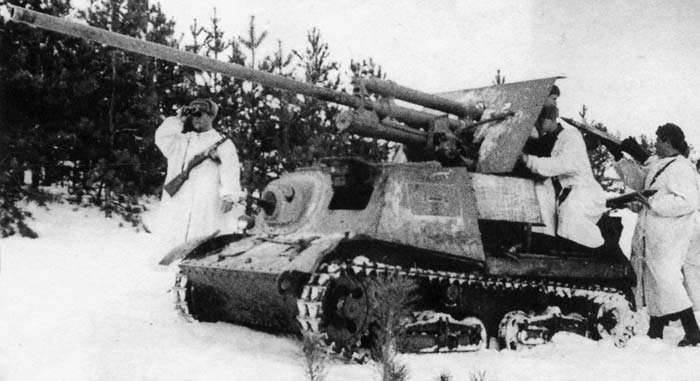
However, there were substantial claims to the car. The main problem with the 57 mm gun was its recoil device. As for the caterpillar base, the engine was quite expectedly criticized here. In snowy off-road conditions, its power was often not enough. In addition, among the shortcomings was indicated a very weak reservation of the base chassis and a high calculation vulnerability during artillery and mortar shelling. The bulk of the ZIS-30 was lost by mid-1942, but the operation of individual machines continued until the beginning of 1944.
Although our troops in the initial period of the war were in dire need of tank destroyers, the ZIS-30 was the only Soviet tank destroyer brought to the stage of mass production in 1941. In a number of design bureaus, work was underway on the installation of a 76,2 mm USV divisional gun on the chassis of the T-60 light tank and an 85-mm 52-K anti-aircraft gun on the chassis of the Voroshilovets heavy artillery tractor. The project of the PT SAU U-20 on the chassis of the T-34 medium tank with an 85-mm cannon mounted in a rotating triple turret open from above looked very promising. Unfortunately, for a number of reasons, our troops received a fairly effective anti-tank self-propelled gun SU-85 only in the autumn of 1943. This and other Soviet self-propelled guns used during the Second World War will be discussed in the second part of the review.
To be continued ...
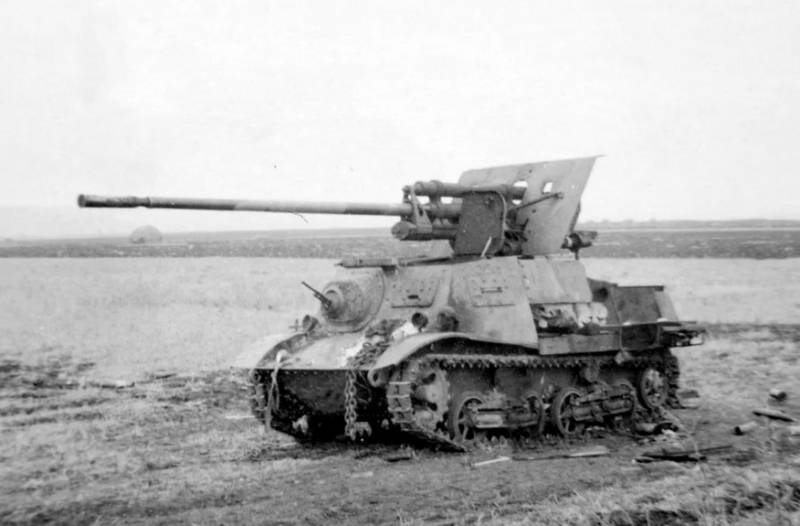
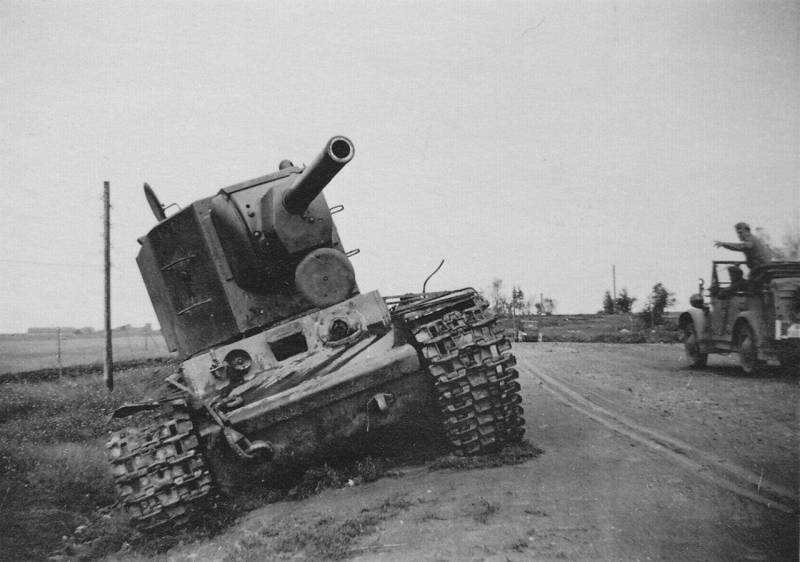
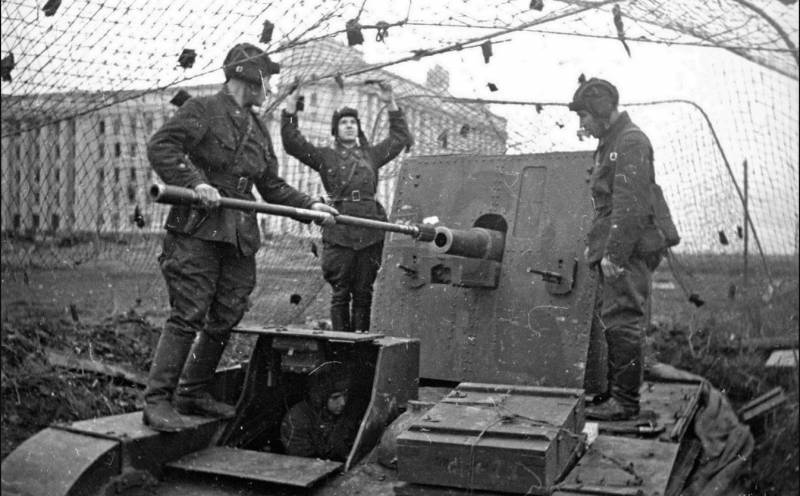
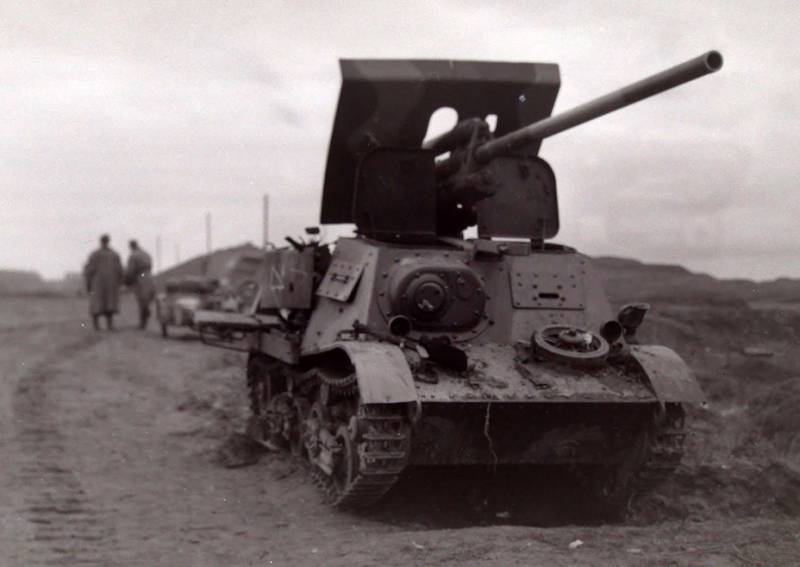
Information